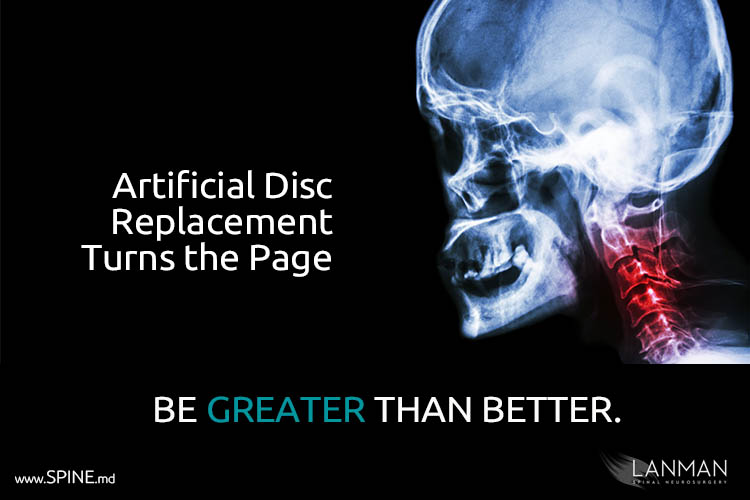Why ADR is a “page-turning” medical development that ALL patients should know about.
I see patients, every day, who are broken by excruciating, often debilitating pain. I’m kept very busy by a nearly non-stop schedule at my private practice in Beverly Hills and in my work as an associate surgeon at Cedars-Sinai Medical Center in Los Angeles.
When I meet my patients for the first time, many will peer at me with a hopeful look as they wince and squirm from various pain complaints, usually emanating from the spine, often cervical (neck) or lumbar (lower back). The causes are as varied as their circumstances; back and neck pain knows no limits. It crosses all demographics and lifestyles. As a consequence, I see as many young and athletic patients as I do aging and sedentary ones.
The goal for every patient I see is always the same – get better, put the pain behind them, and regain the freedom of movement. I take it one step further: I want my patients to be greater than better. We work together on a treatment plan that matches each unique situation. Many times the program starts with nonsurgical options like nutrition, fitness, physical therapy, and pain management.
When I introduce my patients to their surgical options, we look at all of them – minimally invasive laminectomy, foraminotomy, partial discectomy, artificial disc replacement, and spinal fusion. A few of my patients who have received other consultation are surprised when they hear me offer artificial disc replacement as an option. Which astonishes me.
Artificial disc replacement is the newest among other treatments. Introduced in 2005 for lumbar applications and in 2007 for cervical, it is a significant surgical alternative to the decades’ old method of spinal fusion, introduced in 1950. Moreover, as artificial disc replacement (or “ADR”) is as invasive as fusion, all current studies show better patient outcomes in every way: regarding the reduction of pain complaint, neurological function, and fewer revision surgeries.
Just recently, I was the lead author of a new study, and the findings are nothing less than ground-shaking. Published earlier this year in the “Journal of Neurosurgery: Spine,” my colleagues and I present results of a seven-year study that tracked patients who underwent spinal fusion versus patients who had two-level cervical ADR surgery using a popular artificial disc called the “Prestige LP.”
This post-operative study involved nearly 400 patients – randomly selected from 30 U.S. medical facilities. About half of the patients underwent two-level cervical disc replacement, and the remainder were treated with anterior cervical discectomy and fusion (ACDF). The focus of our study was to measure overall success based on some clinical criteria, namely pain complaint, post-operative revisions, flexibility and movement, and other factors.
Of those who were disc replacement patients, the success rate was 81.4%. Of those who underwent fusion, the success rate was 69.4%: all evidence of “statistical superiority” in terms of patient outcomes over spinal fusion. The seven-year study follows the favorable findings of a 24-month study and several previous studies where I have been a co-participant with other practitioners since the inception of this procedure.
Spinal fusion surgery is what I consider brute force against back or neck pain. “Brute” because it is designed to stop motion of the vertebral level or segment that is generating pain.
Unlike fusion, the design of artificial disc replacement is to help the patient preserve as much natural movement as possible while eliminating the pain generators (e.g., pinched nerves). In fact, all artificial discs are designed to mimic the form and function of the original discs.
This seven-year study is clinically significant because it shows the transformational value that disc replacement surgery has for patients who suffer from neck and lower back pain. It is also a signal for the entire medical community to present their patients with all options – not just the ones that we physicians may feel most comfortable.
Artificial disc replacement is no longer a “new procedure.” It is a page-turning medical development that all patients should be allowed to consider.
After all, movement is life.
###






